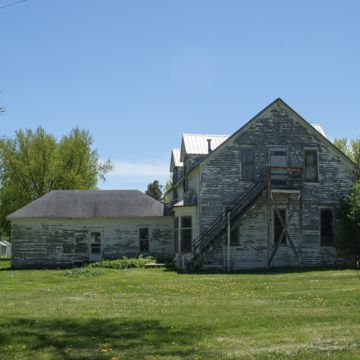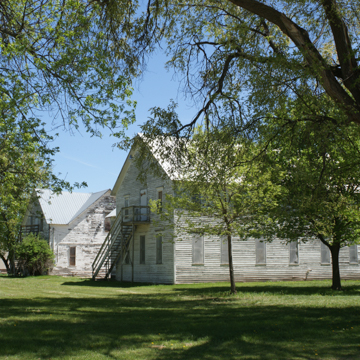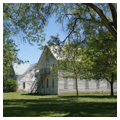Located across the road to the south of St. Peder’s Evangelical Lutheran Church, the original Danish Folk School reflected the early ambitions of the Nysted community. The school was one of six established in North America that was influenced by the beliefs of Nikolaj F. S. Grundtvig, considered the father of the Danish folk school movement. Constructed in 1888, it served many Danish immigrants in the region by providing an orientation to America in addition to preserving their Danish heritage and language. Today the major physical remnants of the folk school are two large buildings occupying the center of the site. These two-story frame structures were originally joined to form a single U-shaped building. The now-missing link between the two wings included a tower and north-facing porch. The folk school closed in 1937 due to declining enrollment and since then the complex has been administered by several organizations that have utilized the buildings for civic, educational, and religious activities.
References
Christensen, Marjorie, Barbara Sorensen, and Jill Dolberg, “St. Peder’s Evangelical Lutheran Church,” Howard County, Nebraska. National Register of Historic Places Registration Form, 2006. National Park Service, U.S. Department of the Interior, Washington, DC.

















